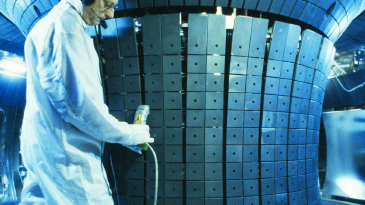The oil and gas industry has been dealing with strong headwinds the last few years. Less than optimal demand, threats from alternative energy sources and lower prices have all pressed oil and gas executives into heavy cost reductions. As noted in the PWC 2017 Oil and Gas Trends report, “Smart IOCs [international oil companies] will embrace new digital initiatives as a means of offsetting expense escalation and furthering the cost and efficiency improvements they have already achieved.”
The challenge isn’t interest — it’s a matter of prioritization. Oil and gas executives need a demonstrable clear case that additional technology investments will tie to sustainable profitability. Consider these recent market projections:
-
OPEC projects that oil demand will continue to increase through 2040.
-
Per Axios, IHS Markit is set to release a report finding “oil demand could flatten out — but not decline — in the 2030s.”
-
Oil companies such as Shell are saying demand for oil could peak by the late 2020s.
Those market projections vary widely and span decades. It’s no wonder oil and gas executives are cautious when considering increased investments and expenses.
However, when we talk to these executives there remains a keen interest in improving asset and output performance and shoring up CAPEX expenditures. And interestingly, they are open to achieving those goals through digital transformation. Gartner confirms this through their 2017 CIO Survey, which found, “87 percent of oil and gas respondents stated that their companies now had a digital initiative.”
The natural question then is, what technology could further digital initiatives and directly map to sustainable profitability? It would have to be technology that can take advantage of data from every portion of the business. It would provide real-world context to that data, and deliver actionable insights that could unify IT, operations and maintenance.
Thankfully for oil and gas executives, that technology exists in the latest generation of asset performance management (APM). Per Gartner’s “Market Guide for Asset Performance Management” from March 8, 2017, “Asset management strategies are beginning to shift from preventive to predictive — driven by innovation in enabling technologies and streamlined access to consistent operational technology (OT) data resulting from IT and OT alignment and integration.”
Consider these distinct oil and gas sector issues, and how each can benefit from accelerated adoption of today’s APM technology.
Upstream
If assets don’t perform as expected, crude oil and gas is left untapped, and revenue generation grinds to a standstill. Oil and gas fields are being fully digitized to reduce time to extraction, creating massive data volumes. The ability to process these data volumes for true prescriptive recommendations is where today’s APM delivers immediate value.
And when historical data is combined with live asset performance data and processed at scale through APM, upstream locations can improve reliability from the wellhead to transport, while increasing capacity with minimum CAPEX.
Midstream
Asset downtime limits processing yields and reduces uptime and flow assurance, critical in midstream environments where quality and on-demand production are central to revenue generation. Leveraging existing design and operations data to provide prescriptive maintenance on pipelines ensures consistent flow and asset output volumes.
Downstream
Agility is essential in downstream environments to take advantage of global crude markets, shifts in crude slates and changes in product demand. APM improves refinery asset reliability and availability, enables real-time updates for high-fidelity refinery-wide models and improves overall availability and energy use.
The oil and gas industry has adjusted to the new price reality and needs to invest in areas that consistently improve operations now and into the future. Being agile through digitization enables oil and gas companies to take advantage of market opportunities, maintain balance sheet health and keep costs under control.
Better asset management through proactive, prescriptive technology brings improved reliability to every location along the supply chain. Doing so with APM can provide measurable and sustainable performance advantages in an ever-shifting global environment.
To learn more about how companies are leveraging APM technology to boost profitability, please read my recent executive brief: The Time is Right for Optimum Reliability: Capital-Intensive Industries and Asset Performance Management.




Leave A Comment